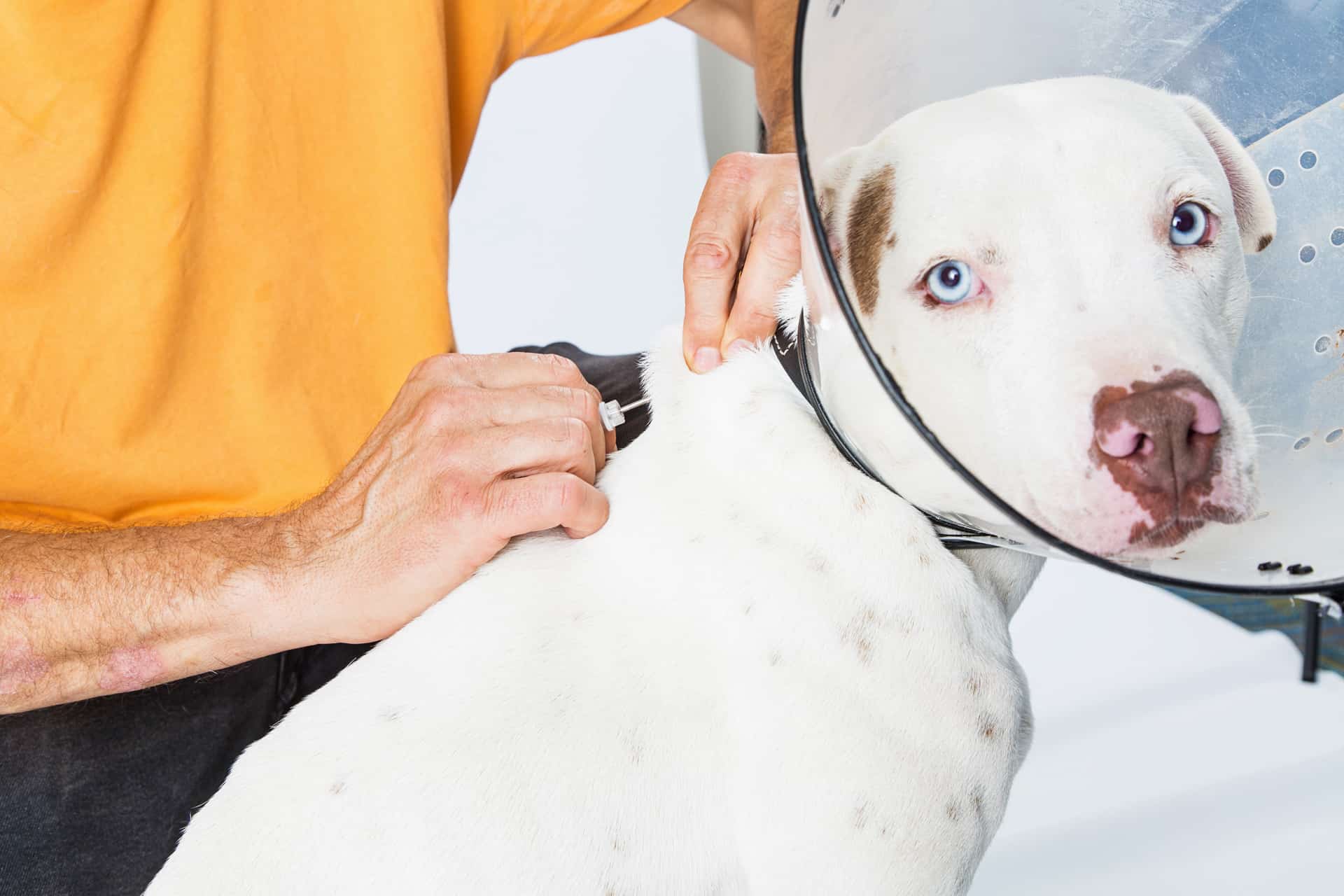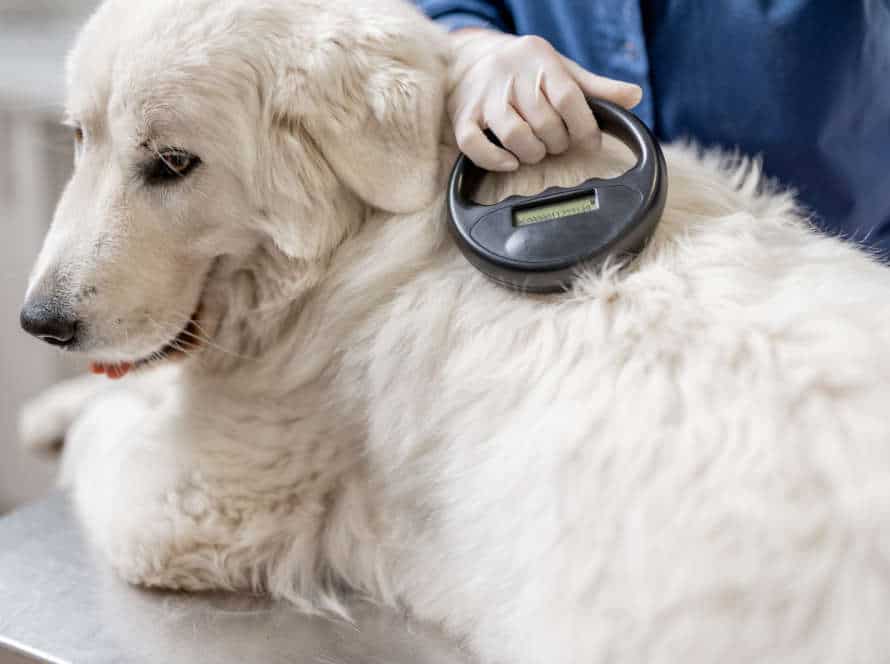Choosing the Right ID Tag for Your Dog
Choosing the right ID tag for your pup is necessary for his/her security & wellness. Here’s how to decide the perfect tag:
- Material: Pick a solid material like stainless steel or anodized aluminum. These materials are tougher & withstand weather/wear.
- Size: Tag size should suit your pup’s size. Too big/small can lead to discomfort & they may try to remove it.
- Information: Put pup’s name, your name & phone number on the tag. Address too, if pup gets lost/wanders away.
- Style: Many tag designs in the market. Some come with colorful graphics, making them stylish & fun. Don’t let style affect its function.
By following these tips, you can select the right ID tag for your furry companion & guarantee their safety.
Importance of ID Tags for Dogs
ID tags are a must-have for any pup parent. They make sure your doggo can be identified and brought back to you if they go missing or are taken away. The correct tag on your pup’s collar will help people contact you fast. But, what kind of ID tag should you get? Let’s discover the options and how to choose the best one for your doggo.
Risks of Lost Pets
Losing a pet can be really bad. Dogs especially tend to wander off and get lost. Investing in an ID tag for them is really important. When you choose one, think about what it’s made of. You want something strong, like stainless steel or brass. Make sure the tag has your pet’s name and your phone number. The size should fit your pet. And pick something with a style that looks like your pet’s personality. Following these tips will help ensure your pet’s safe return if they ever get lost.
Legal Requirements for Pet Identification
Legal requirements for pet identification, including ID tags for dogs, exist in many jurisdictions. The aim of these rules is to reunite lost pets with their owners quickly.
Therefore, dog owners should:
- Get a pet license from the local government.
- Attach an ID tag with their contact info plus the dog’s name to its collar.
- Microchip the dog in case the collar is lost.
Choosing the right ID tag is important. It should be durable, lightweight and readable. Include at least two forms of contact information, such as a phone number and email address.
Pro tip: Check the info on the tag regularly to ensure it is up to date.
Peace of Mind for Pet Owners
Secure your pup with a proper ID tag! It’ll give pet owners peace of mind if their pup gets lost. Here’s what to consider when choosing the right tag:
- Pick a durable material that won’t easily break.
- Make sure the tag has enough space to write your pup’s name, your contact details and other important info.
- Opt for reflective surfaces to boost visibility, especially if you live in a busy area.
- Include your vet’s contact info or your pup’s medical condition to help if they need emergency care.
- Remember to keep your contact details up-to-date on the tag in case you move or change your number.
By following these tips, you can choose the best ID tag for your pup and have fun with them worry-free!
Types of ID Tags for Dogs
For your pup’s safety, an ID tag is essential. But with so many types to choose from, it can be tough to decide. Let’s look at the pros and cons of the different ID tags available. This way, you can make a wise choice when selecting the right tag for your pet!
Traditional Engraved Tags
Engraved tags are a popular type for pups. They’re durable, simple and easy to use.
Stainless Steel Tags: Wear-resistant and can have a range of designs – like your pup’s name, address and number.
Aluminum Tags: Lightweight and come in many shapes and colors – you can personalize with text and symbols.
Brass Tags: A classic choice with room for five lines of text – name, address, number and more.
Plastic Tags: The most affordable option. Wide range of colors and shapes. Engrave info like name and address.
Make sure the tag is securely on the collar and has all the info needed to keep your pup safe!
Materials
Dog identification tags are a must for keeping your pet safe, in case they wander or get lost. Here are some kinds of ID tags to pick from.
- Classic tags: The usual hanging tags. Flat, light and customisable so you can add your pet’s details.
- Smart tags: Equipped with Bluetooth tech, so you can use your mobile device to track your pup’s location. Plus, set up virtual safe zones to monitor movements.
- Rugged tags: Built tough to handle harsh weather and outdoor activities. Made of stainless steel and coated to prevent rusting and fading.
- Hi-visibility tags: Reflective and bright colours make them easy to spot in low light. They give an extra layer of safety on top of the classic tags.
Choose the type that meets your pup’s needs and lifestyle for optimum safety and peace of mind.
Customization Options
ID tags for dogs are super important, in case they get lost. Different owners have different needs, so there are many customization options available. Traditional ID Tags have basic info like your dog’s name and your phone number(s).
Smart ID Tags have QR codes that, when scanned with a smartphone, take you to a web page with info about your pup’s medical condition, meds and emergency contacts.
Slide-On ID Tags fit over the collar, so no dangling tag!
Custom-Shaped ID Tags are fun and stylish.
LED ID Tags light up, making it easier to find your dog in the dark. It’s important to personalize these tags, so your pup can be easily identified if they go astray.
QR Code Tags
QR code tags are a practical, innovative ID tag for dogs. They stand out from other types of tags with their functionality and convenience.
You place a QR code on your dog’s tag. Anyone with a smartphone can scan it. This code has your contact information. So, if your pup gets lost or wanders off, you can be easily located.
QR code tags are durable, simple to update, and have all your contact info in one place. Also, you can add medication or dietary needs to the code.
When choosing an ID tag for your pup, consider size, breed, and daily routine. Pick the best type of tag for them.
How QR Code Tags Work
QR code tags for dogs are special. They are digital identification tags that you can attach to your pup’s collar. Information like your pet’s name, your contact info and medical history is stored.
Here’s how they work:
- Purchase a tag and register it with the service provider.
- Enter all the info they ask for. A unique QR code is then assigned to the tag.
- Attach it to your dog’s collar.
- If your doggo is ever lost, someone can scan the code using their smartphone or a scanner. The code will redirect them to a website with your pet’s info.
- This way, the person can contact you and return your pup!
QR code tags are a great way to keep your pooch safe. Pro tip: Always make sure your contact info is up to date and visible on the QR code tag.
Advantages and Disadvantages
When picking an ID tag for your dog, there’s a range of tags on the market. Consider these things when deciding:
- Advantages of Stainless Steel ID tags:
- Durable & last long
- No corrosion, rusting or tarnishing
- Easy to read & various designs.
- Disadvantages of Stainless Steel ID tags:
- May irritate pups with delicate skin
- May scratch over time.
- Advantages of Silicone ID tags:
- Lightweight & comfy for dogs
- Different colors
- Quiet, no jingling.
- Disadvantages of Silicone ID tags:
- Not as durable and long-lasting
- May not be as readable as metal tags
- May keep odors over time.
Pro Tip: Include essential info like your pet’s name, contact details and medical info. This can help with the return of your pup!
GPS Dog Collars
A GPS dog collar is an advanced ID tag. It allows owners to track their dogs in real-time.
Before selecting the right ID tag, understand the types available.
Traditional ID tags show the dog’s name and owner’s phone number. Microchips are tiny implants with identification info. When scanned, info is sent to a database to locate the owner.
GPS collars use GPS tech and show location in real-time. This info is sent to the owner via a mobile app or website.
It depends on your needs and concerns as an owner which ID tag to choose.
How GPS Dog Collars Work
GPS dog collars use a GPS tracking device and cellular tech to locate your pup in real-time. It attaches to the collar your pet wears. Data about the location is sent to your phone or computer.
Different ID tags for dogs exist, such as digital, QR code, and traditional engraved ones. It’s essential to choose the right tag for your pup to guarantee safety and help return them if lost.
Digital tags let you update info and contact details without buying a new one. QR codes can be scanned for your contact info if found. Engraved tags remain popular and can be customized with info about your pet and contact details.
Whichever type of ID tag you choose, make sure it includes your dog’s name, your name, and phone number. Also, keep the information up to date to ensure your pup can always be returned safely.
Advantages and Disadvantages
Choosing the right ID tag for your pooch has pros and cons. Traditional tags are cheap and can be customized with your dog’s name, contact info, and medical needs. But, they can make noise, wear down, and get caught. QR codes offer more info and can be scanned with a phone. But, not everyone knows how to use them, and they won’t work without internet or if damaged. Microchips are permanent and can be read by shelters and vets. But, you need a vet to implant them and they don’t offer immediate ID like other tags. Weighing the pros and cons can help you pick the right one.
Factors to Consider When Choosing ID Tags for Dogs
Choosing the ideal ID tag for your pooch can be tough. It’s essential to make sure you have the correct data and elements to think about, as the correct ID tag could possibly save your dog’s life. There are various elements to consider when picking an ID tag for your pup. These include their size, personality, and the materials used to make the tags. The following article will talk about some of the significant elements to bear in mind when selecting an ID tag for your dog.
Size of Dog
Size is key when choosing ID tags for your pup. Tags must fit right, be readable and cause no discomfort. Here’s what to consider:
- Size of tag: Smaller ones perfect for smaller dogs: lightweight and comfy. Bigger pups need bigger tags with bigger fonts.
- Font size: Proportional to the tag and dog size. Smaller tags need larger fonts to be readable. Bigger tags can have smaller fonts.
- Material: Metal, plastic or silicone. Metal is durable but heavy for tiny dogs. Plastic or silicone are lighter but not as durable.
- Attachment: Secure and designed for the collar size. So it won’t get detached.
Get the right ID tags for your furry friend. To avoid discomfort and ensure readability.
Activity Level of Dog
When picking an ID tag for your pup, think about its activity level. The tag should be able to handle your dog’s everyday routine and active lifestyle! Here are some things to keep in mind:
- Material: Go with stainless steel, brass, or aluminum. These are strong enough to take on wear and tear.
- Shape & Size: Make sure it fits your pup’s size, weight, and breed. It should not stop them from moving or playing.
- Attachment Method: Select the type of attachment that works with their collar. Hooks, loops, or split rings are good. Make sure it won’t come off easily.
- Information: Put your pup’s name, your name, and your contact info. Plus, add any medical info.
Think about these points to choose the right ID tag for your pup. It’ll stay protected and identifiable all the time!
Lifestyle of Owners
Choosing an ID tag for your pup? Think about your lifestyle and pup’s day-to-day activities to pick the right fit. Here’re some things to consider:
- Material: Opt for materials like stainless steel, brass, or titanium that can handle your pup’s activities.
- Size: Pick a tag suitable for your pup’s breed and weight. Not too big, not too small – just enough for the essential information.
- Engraving: Clear, legible engravings of your pup’s name, your name, address, and phone# are key.
- Style: Select a style that fits your pup’s personality and your own lifestyle. Dogs reflect their owners, so choose a tag that represents both.
Remember these points when picking an ID tag that’ll keep your pup safe, secure, and stylish. Pro Tip: Personalize it with unique designs or colors to make it stand out and match your pup’s personality!
Budget
Selecting the right ID tag for your pup is a must for safety. It doesn’t have to cost a bundle. Consider these factors when choosing a budget-friendly ID tag:
- Material: ID tags come in many materials, like stainless steel and plastic. Steel is tough, but plastic could be more affordable.
- Size: Pick a tag that suits your dog’s size. A small pup needs a smaller tag than a big one, but both should be readable.
- Info: Make sure there’s enough info for a safe return of your pet. This may include the pet’s name, your contact number, and address.
- Design: A round metal tag is the most affordable. But, you can still get fun designs or shapes that fit your budget.
Think about these factors and you can find an ID tag that’s within your budget and keeps your furry friend safe.
Tips for Maintaining ID Tags
ID tags for your pup are a great way to guarantee their safety if ever lost. Picking the correct one is important. Here are some tips to help you with maintenance and choosing the best tag for your dog. Here we go!
- Maintain the tag with regular cleaning.
- Make sure it is durable and readable.
- Choose a tag that is the right size for your pup.
- Ensure the info is up-to-date and clearly written.
- Consider a tag with a QR code for easy tracking.
Keeping the ID Tag Clean
Keeping your pup’s ID tag neat is important. So, here are some tips to maintain it!
- Use a microfiber cloth to wipe off any dirt.
- Don’t use rough agents like steel wool that can damage the tag.
- If the tag is grimy, soak it in warm, soapy water and use a soft brush to scrub it.
- Rinse and dry it with a clean cloth before attaching it back to the collar.
- When selecting an ID tag, go for one with bold letters.
- Also, clean it once a month to keep it legible and prevent it from tarnishing!
Checking the Tag for Wear and Tear
Checking your pup’s ID tag for wear and tear is a must. To keep your pup safe and secure. Here’s how:
- See if there are any scratches or dents on the tag. This could make it hard to read.
- Check that the fastener or chain attaching the tag to your dog’s collar is secure.
- Make sure the info on the tag is accurate. This includes your dog’s name, your name, contact details and medical/dietary needs.
- If the tag is worn or the info needs updating, replace it right away. Your pup can be identified and returned to you if lost.
Pro Tip: Get a tag made of strong and corrosion-resistant material. E.g stainless steel or titanium. So it doesn’t wear down over time.
Updating the Information on the Tag
It’s important to keep your pup’s ID tag info current. Here’s how:
- Select an ID tag that suits your pup’s lifestyle. For example, get one that’s waterproof if your dog loves swimming.
- Check the tag for any damage or wear. Change it if needed.
- Update the info regularly. Include your pet’s name, your name and number, and any medical or dietary needs.
- Think about getting a microchip as an extra safeguard.
By doing these simple things, you can guarantee that your pup’s ID tag works properly and your contact info is up to date.
Conclusion – Choosing the Best ID Tag for Your Dog
To sum it up, selecting the perfect ID tag for your dog is essential to keeping them safe if they ever get lost. Here are the main points to keep in mind:
- Materials such as metal, silicone, or plastic should be considered.
- The tag must be tough and resistant to damage.
- Include all important details on the tag; for example, your pup’s name, your contact details, and any medical issues.
- Pick a tag that fits well on your dog’s collar.
- Don’t forget to refresh the tag if any information changes, and check regularly to make sure it’s still readable and secure.
By following these tips, you can make certain your furry buddy is always guarded and easily identifiable.
Frequently Asked Questions
1. What should I include on my dog’s ID tag?
Your dog’s ID tag should include their name, your contact information (phone number and/or address), and any relevant medical information, such as allergies or medications.
2. Are there any regulations regarding ID tags for dogs?
Yes, some cities or states may have regulations about what information must be included on a dog’s ID tag. It’s important to check with your local government to ensure you’re in compliance.
3. What materials are best for dog ID tags?
Durable materials, such as stainless steel or brass, are ideal for dog ID tags. Choose a material that will withstand wear and tear, as well as exposure to the elements.
4. Should I get a personalized or generic ID tag?
Personalized ID tags with your dog’s name and your contact information are recommended. This ensures that if your dog is lost, whoever finds them will be able to contact you directly.
5. Can I get a GPS tracker on my dog’s ID tag?
While it’s possible to get a GPS tracker that attaches to your dog’s collar, it’s not recommended to include one directly on the ID tag. GPS trackers can be bulky and may make the ID tag uncomfortable for your dog to wear.
6. How often should I replace my dog’s ID tags?
It’s recommended to replace your dog’s ID tags every year, or as needed if the tag becomes damaged or unreadable. This ensures that the information on the tag is up-to-date and easily accessible in case of an emergency.







